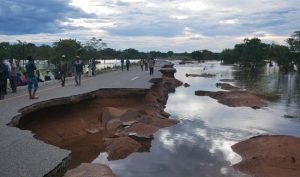As the world gears up for the UNFCC’s 28th Conference of Parties (COP28), one of the big expectations is how the Loss and Damage funds and funding arrangements will be operationalised.

Though coming into being, more than 30 hours after the official closing ceremony in Sharm El-Sheik, Egypt, the concession on the Loss and Damage funds is still regarded as one of the most celebrated outcomes of the 2022 United Nations Climate Change Conference (COP27).
Speaking during a Net Zero webinar titled “Net Zero and COP28: Getting it right”, Ken Henshaw, the Executive Director of We The People Nigeria, has urged actors on the field of play, especially those from the African continent, to arm themselves with answers to these questions as they step into the negotiation COP28 rooms.
- How will the loss and damage fund be different from other previous climate finance funds? We must not forget the 100 billion that was promised many years ago. Only less than 10 billion have been delivered right now. So, we need to know how different this will be.
- How additional will this loss and damage fund be? It’s actually possible for you to rename or rechristen existing climate funds and call them loss and damage funds. So we must be clear about how much of an additionality will the loss and damage fund be.
- How will the fund be delivered? Will it be compulsory funding, or will it be voluntary funding? It is very critical to note that previous funding was voluntary, and they all failed. So, will this loss and damage funds be voluntary also?
- Where would the fund be generated from? We have heard about carbon taxes and all sorts of things but who’s going to pay? Where do we expect to get this money from?
- How will the fund be delivered to the people who need it most? Understanding that a lot of the countries in Africa have governments that are not accountable nor representative of the wishes of the people. How will the funds get to them? In Nigeria, for example, where the current processes of transferring benefits to communities have basically failed? How will the loss and damage fund be addressed differently?
- How far back will loss and damage go? How many years? 10 years 20 years?
- What kind of losses are we dealing with? Are we dealing with losses to infrastructure, or losses to cultural heritage, or losses to people’s livelihoods? Are we dealing with losses of health, and the impact of migration? How do we define these losses?
- Who will be the administrator(s) of this fund? There have been several kickbacks around the World Bank taking control of these. The World Bank should not come near that fund with a 10-foot pole. The history of the World Bank in third-world countries in Nigeria for example. If the World Bank manages that fund, they are going to take like 50% as administrative cost. That’s what the World Bank does!
By ’Seyifunmi Adebote, Contributor, EnviroNews and Host, Climate Talk Podcast
